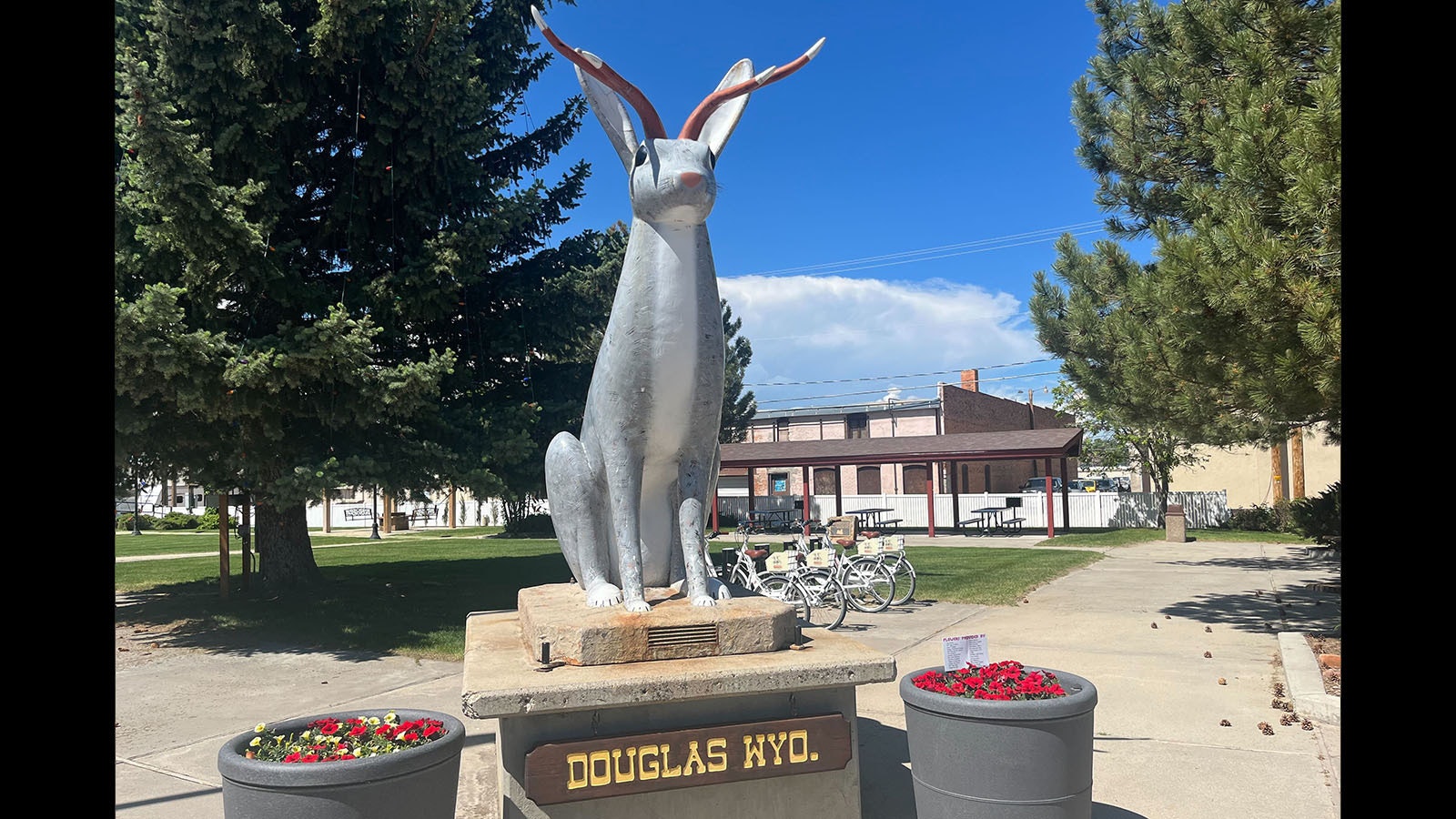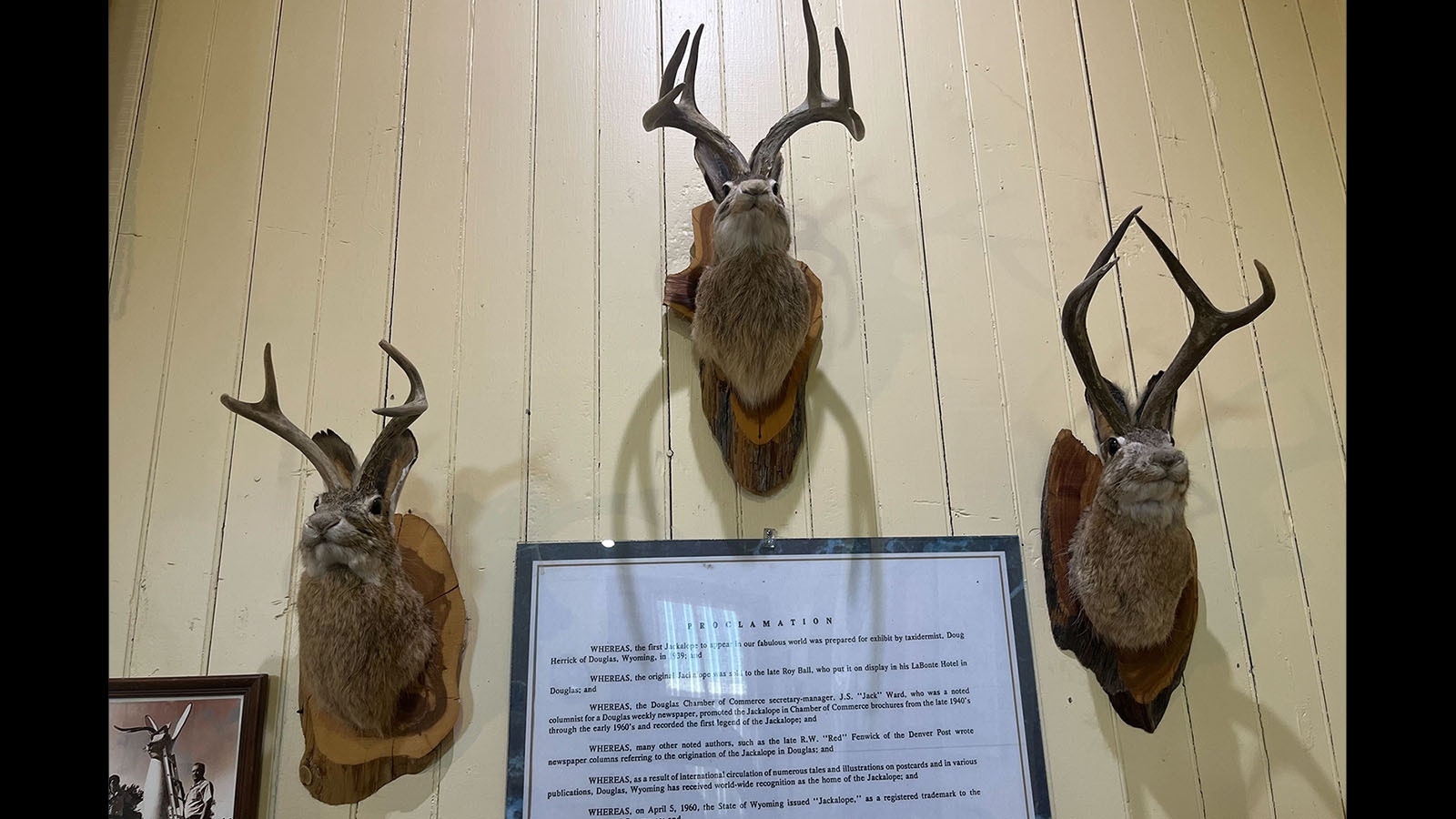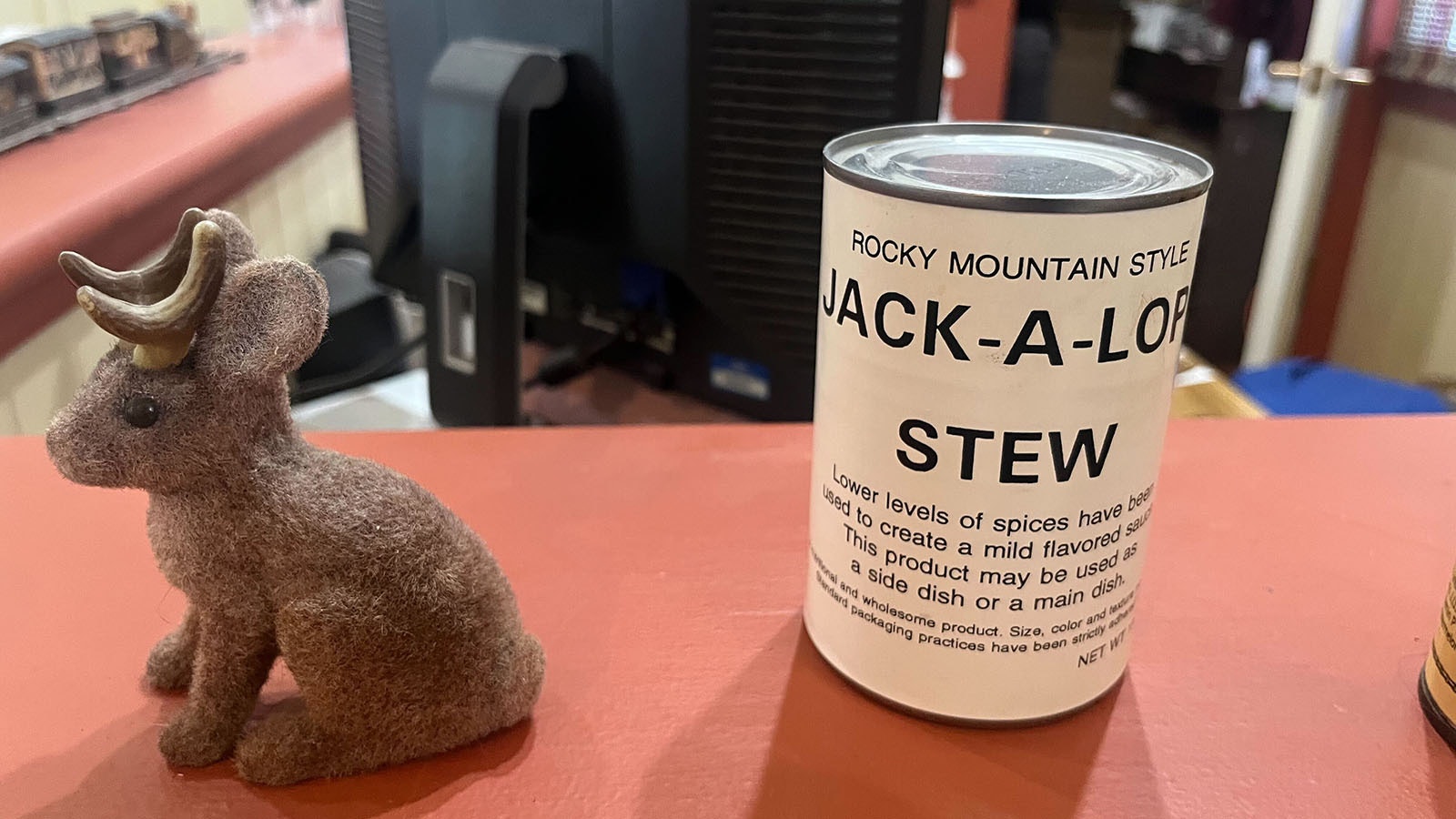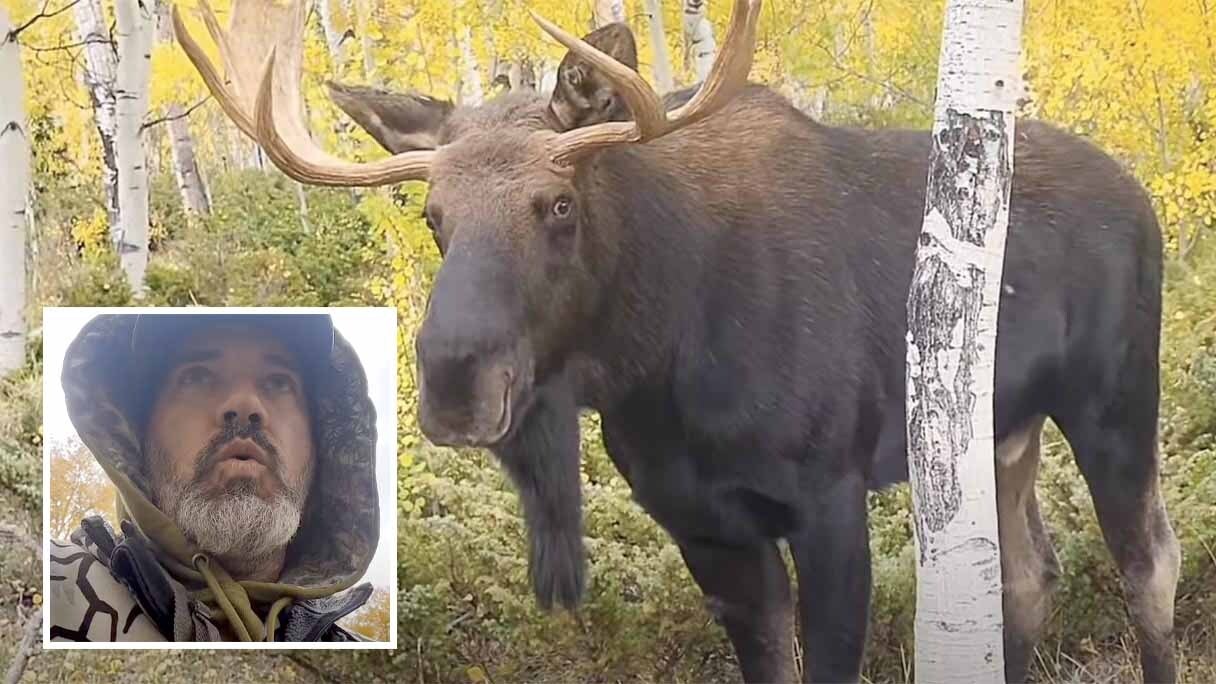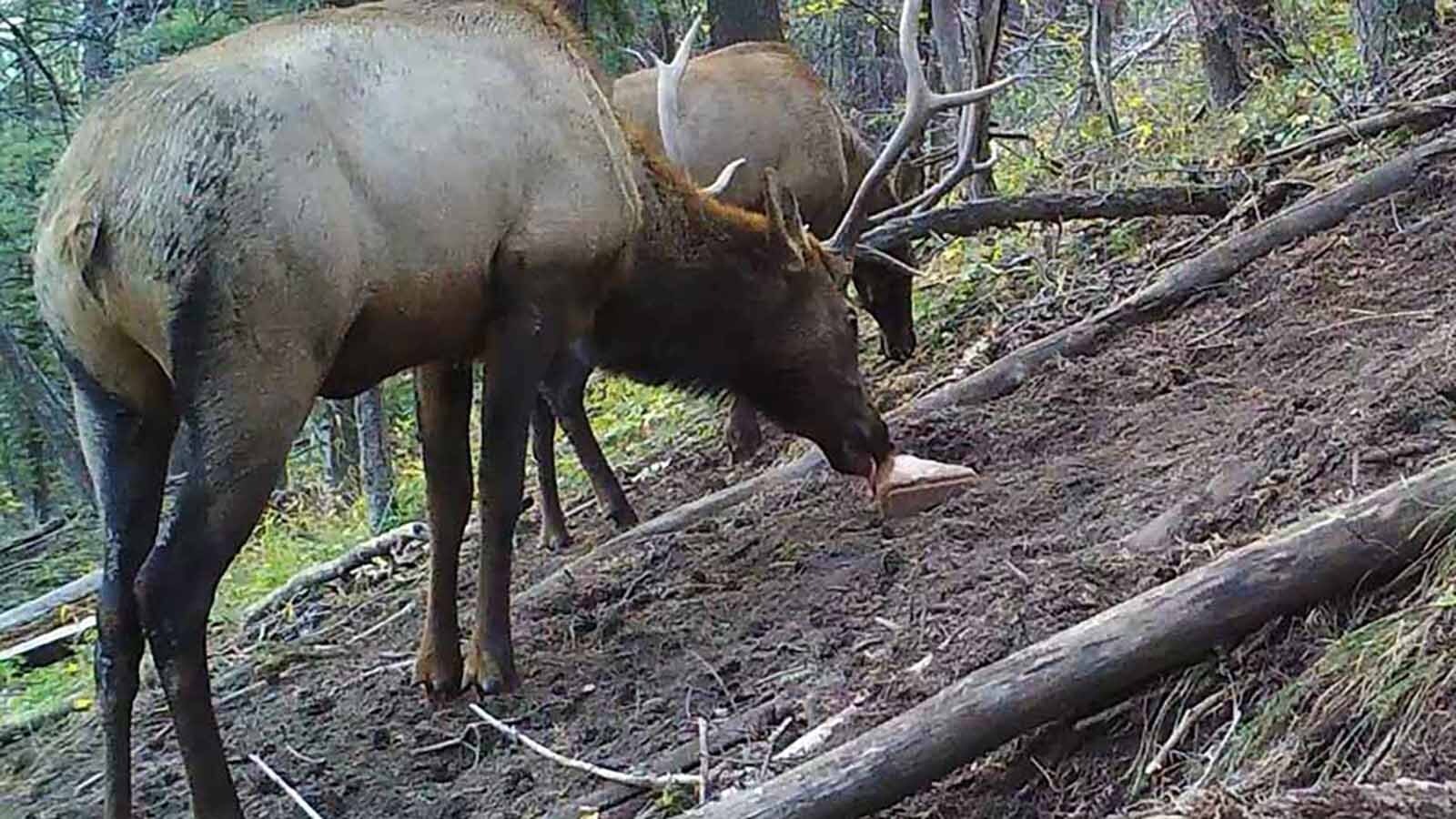Somewhere deep within the untamed expanses of the northern Colorado wilderness, an ordinary animal is undergoing a frightful metamorphosis.
By the light of the full moon, hard, pointed protrusions like devil horns sprout from behind the soft fur of its ears. Around its large eyes come black slithering masses that twist and writhe like Cthulhu's tentacles.
Under its mouth extend two dark, forked barbs, a veritable pair of outgrowths that resemble vampire fangs, suggesting it has truly become a monster. With the transformation complete, the creature emerges from the brush to reveal, not a Lovecraftian horror beyond human comprehension, but a common cottontail rabbit.
This particular species, ubiquitous in Wyoming, is experiencing the effects of a seasonal surge in Shope papilloma virus, a disease that causes the growth of dark structures made of keratin around a rabbit’s face and neck.
Images of rabbits with this bizarre affliction have made waves across social media, with many likening their strange visage to that of Frankenstein’s monster or an undead zombie.
While no infected rabbits have been spotted in Wyoming, some have made their way as close as Fort Collins, Colorado, sparking speculation they may soon cross over into the Cowboy State.

What’s Up, Doc?
Laurie Hess, an exotic pet veterinarian in Bedford Hills, New York, told Cowboy State Daily the disease is normally not life threatening to a rabbit. She said the emergence of these horn-like growths is similar to the way warts appear in humans.
“It’s been around forever, it’s a virus, it’s nothing new and it’s being sensationalized because people are seeing what it can do to wild rabbits,” Hess said via phone. “These rabbits look freakish but usually these [growths] are benign things, sometimes they will kind of fall off and go away.”
“It’s just the way the body reacts and walls off this virus as it divides, and it forms this pile of protein that happens to be in the shape of a horn,” Hess added.
In rare exceptions the growths can develop into malignant cancer but are otherwise harmless.
“The good news is, it’s not transmittable to people, it’s not transmittable to other pets other than rabbits,” Hess said.
Hess said the appearance of such growths is specific only to rabbits, even though different types of papilloma viruses exist in other species, including humans.
While the strange twisting horns caused by Shope papilloma virus have drawn comparisons to the zombie Cordyceps fungus popularized by the HBO series “The Last of Us,” Hess said the disease is something entirely different.
“Fungus is an environmental thing,” Hess said. “Even athlete’s foot is a fungus, it lives in the gym in the drain, and you step in it and you get it.”
Shope papilloma virus“is not like a plague spread through the air, it’s not like that, it’s not like COVID where you breathe the same air as someone with COVID has,” she added. “It has to be a transmission and it’s usually through insects.”
A late summer resurgence of mosquitos, therefore, creates prime conditions for the spread of the shocking malady. Hess added that owners of exotic pets, such as rabbits, should make sure to bring them to the vet at least once per year to monitor for similar strange diseases.
Though Wyoming has yet to see any infected rabbits, the state Game and Fish Department confirmed to Cowboy State Daily in an email that it is monitoring the rabbits’ movement through northern Colorado.
State officials do not have plans to intervene should the rabbits cross into the state, though, as Shope papilloma virus does not threaten any local wildlife.
“While this infection does look alarming, it is not fatal unless it interferes with the animals' ability to eat and drink,” Public Information Officer Amanda Fry wrote via email “We do recommend that you do not handle these animals, and give them space if you come across one.
“Ultimately it is not a serious threat to rabbit populations, nor their role in ecosystems.”
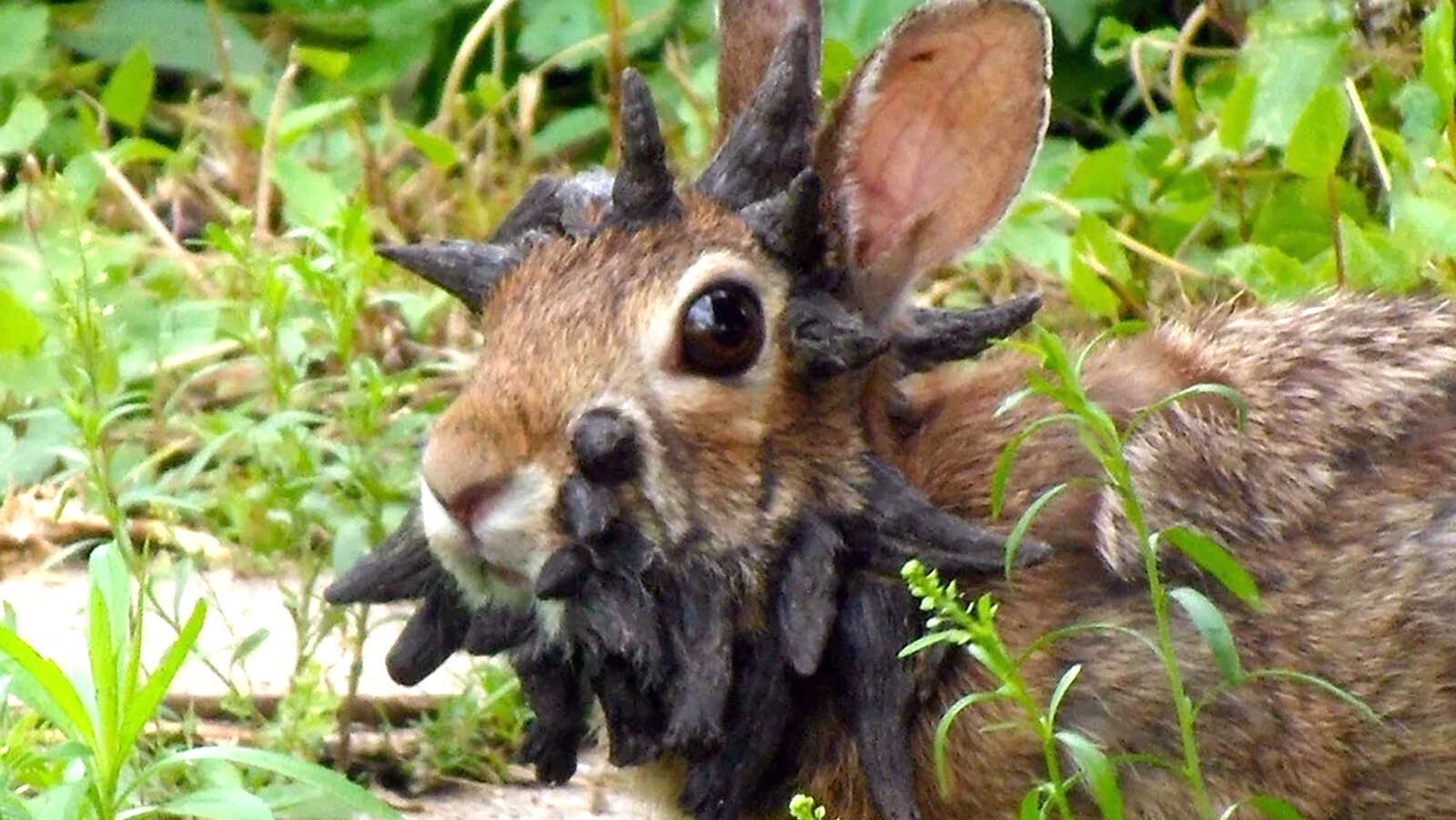
Legend Of The Jackalope
Even though horned rabbit sightings can be explained by science, that doesn’t stop some Wyomingites from speculating they are connected to a greater mythos rooted deep in state history.
The city of Douglas, Wyoming, credits the Herrick family with the invention of the mythical jackalope, an animal with a jackrabbit's body and the antlers of an antelope. Luke Herrick, a third-generation taxidermist in Douglas, said the legend originated from his grandpa Doug, who one evening happened to toss a rabbit carcass next to a pair of antlers on the floor of his shed.
“They decided to try mounting one up,” Herrick told Cowboy State Daily via phone. “My great grandmother, Doula Herrick, she was the one that named it. She said ‘let’s call it a jackalope.’”
Mounted Jackalopes, Herrick added, have since become a signature offering of Douglas’s Herrick Big Horn Taxidermy. Herrick said a typical jackalope mount will cost about $55 to create, which he can then sell in his shop for $155.
“We sell twice as much [jackalopes] as we do our little animals,” Herrick said. “I took it over from my dad and he was doing 3,000 jackalopes a year and he still couldn’t keep up.”
While Herrick said he was unfamiliar with a connection between jackalopes and Shope papilloma virus, he said the legendary creatures feel as real to him as any other animal he mounts in his shop.
“It almost sounds funny but they’re real to us, to me,” Herrick said. “I grew up with it ever since I was born.”
Probably The Virus
Researcher Richard Shope discovered papilloma virus in rabbits in the 1930s around the same time as the invention of the jackalope, a coincidence that may have propelled the historical spread of the legend across the country, according to Douglas Railroad Museum jackalope scholar Jenna Rose.
“I had always wondered if part of it was the [papilloma virus] that the rabbits get, so then they get the horns,” Rose told Cowboy State Daily.
Nearly 100 years of storytelling has also bestowed upon the jackalope a myriad of strange attributes. It doesn’t deliver jellybeans and eggs like its cousin the Easter Bunny, but instead sings cowboy songs, drinks whiskey and mates only during electrical storms. Rose said this mystique likely contributes to the jackalope’s staying power throughout the years.
“I think people just love mythology,” she said. “It’s kind of a cool thing and you’ve got Greek mythology, you’ve got Loch Ness Monster, you’ve got all these things out there and it just grows.”
“We have seen in the past couple of years people coming, just like they go look for The Mothman,” she added. “They’ll go on vacations based on these mythical creatures, so we have had people come here just to see the jackalope.”
The legend has since become a major part of Douglas’s identity, even featuring the jackalope on part of its city emblem. Rose said the museum where she works produces an array of touristy merchandise from jackalope milk to tongue-in-cheek jackalope hunting licenses.
The license, issued by the City of Douglas, permits the bearer to hunt jackalope from 12-2 a.m. on “June 31.” Different iterations of the license will sometimes list penalties for noncompliance, such as the 2022 version which threatens a $13 fine or “13 months hard play in Douglas, Wyoming.”
Herrick said the joke sometimes goes over the heads of eager hunters who set out in search of the rare game anyways.
“I know one instance, a guy was out hunting, shotgun out, and he was walking through the sagebrush looking for a jackalope and a game warden pulled up and asked him what he was doing,” Herrick said. “The game warden told him the truth and that guy was pretty p—ed off.”
While it remains possible a hunter could mistake a rabbit with the Shope papilloma virus for a jackalope, hunters aren’t allowed to shoot it. Jackalope season, according to the city of Douglas, ended more than a month ago.
Cottontail rabbit season, meanwhile, starts on Sept. 1 in Wyoming.
Jackson Walker can be reached at: News@CowboyStateDaily.com
Jackson Walker can be reached at walker@cowboystatedaily.com.

